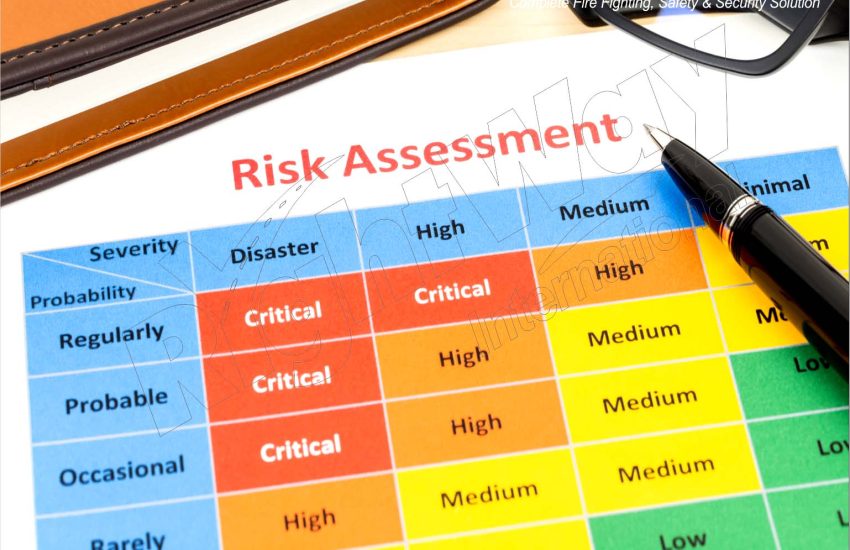Fire Risk Assessment is a critical process for identifying and mitigating fire hazards in any building or workplace. It helps businesses and property owners ensure the safety of employees, tenants, and visitors while complying with fire safety regulations. Conducting a fire safety risk assessment is not just about meeting legal obligations; it’s also about creating a safer environment to prevent potential fire-related incidents, injuries, and property damage.
In this comprehensive guide, we’ll explore the importance of fire risk assessments, the key components involved, and how you can conduct an effective assessment for your property.
What is a Fire Risk Assessment?
A fire risk assessment is a thorough evaluation of a property or business premises to identify potential fire hazards and determine the necessary actions to minimize or eliminate the risk of fire. It involves identifying potential ignition sources, combustible materials, and the effectiveness of existing fire prevention measures, such as fire alarms, extinguishers, and emergency exits.
Why is a Fire Risk Assessment Important?
- Fire Safety Compliance: In many countries, fire safety regulations require employers and property owners to carry out regular fire risk assessments. Failing to comply with these regulations can lead to legal consequences, fines, and potential business shutdowns.
- Protecting Lives and Property: The primary goal of a fire risk assessment is to ensure the safety of people within the building. By identifying fire hazards early, businesses can implement strategies to reduce the risk of fire and protect both human life and property.
- Insurance Requirements: Many fire risk assessments are also required by insurance companies. Proper fire safety measures and documentation can help reduce premiums and demonstrate a commitment to safety.
- Minimizing Financial Losses: A fire can cause significant financial losses, not just in property damage, but in terms of business interruption and reputational damage. By identifying risks and addressing them proactively, a fire safety risk assessment helps mitigate these risks.
Key Components of a Fire Risk Assessment
- Identify Fire Hazards
The first step in a fire risk assessment is to identify all possible fire hazards within the premises. This includes:- Ignition sources: Heat, sparks, electrical equipment, open flames, etc.
- Combustible materials: Paper, wood, plastics, chemicals, etc.
- Flammable liquids and gases: Proper storage and handling are essential.
- Assess the Risks of Fire
After identifying hazards, assess the level of risk each poses. Consider factors like:- How likely a fire could start
- The potential severity of the fire
- The presence of people and their ability to evacuate safely
- Evaluate Existing Fire Safety Measures
Review the existing fire safety systems in place, such as:- Fire alarms and detection systems
- Fire extinguishers and fire suppression systems
- Fire exits and emergency routes
- Evacuation plans and fire drills
- Implement Control Measures
Based on the assessment, implement control measures to reduce or eliminate the identified fire risks. These measures may include:- Regular maintenance of fire safety equipment
- Improving ventilation and removing flammable materials
- Installing fire barriers or fire-resistant materials
- Training staff on fire prevention and emergency procedures
- Document and Review
It’s crucial to document the entire fire risk assessment process and review it periodically. This ensures that fire safety measures remain effective and up to date. The fire risk assessment report should include:- A list of identified hazards
- The level of risk associated with each hazard
- The control measures implemented
- Actions to be taken if risks cannot be entirely removed
How Often Should Fire Risk Assessments Be Conducted?
The frequency of a fire risk assessment depends on several factors, including the type of building, the level of risk, and any significant changes to the premises or its use. However, fire risk assessments should be conducted:
- Annually: For most workplaces and commercial properties.
- After major changes: Any renovation, structural changes, or changes in operations should prompt a new assessment.
- Following an incident: If there has been a fire or near-miss, a reassessment should be done.
Key Benefits of Fire Risk Assessments
- Enhanced Safety
By identifying fire hazards and addressing them, you significantly reduce the risk of fire incidents and ensure the safety of everyone on the premises. - Legal and Insurance Compliance
Regular fire risk assessments ensure that you meet legal requirements and insurance obligations, protecting both your business and employees. - Improved Business Continuity
Proper fire safety planning and prevention can minimize disruption to your business operations in case of a fire, helping you maintain continuity and recover quickly. - Peace of Mind
A comprehensive fire risk provides peace of mind, knowing that you’ve taken the necessary steps to safeguard your employees, property, and assets from potential fire hazards.
Conclusion
Conducting a fire risk assessment is a crucial part of responsible property management and workplace safety. By identifying fire hazards, assessing risks, and implementing appropriate safety measures, you not only comply with fire safety regulations but also protect lives, reduce property damage, and ensure business continuity.


